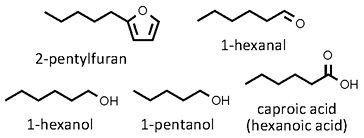 Papaver somniferum
Papaver somniferum
opium poppy
Back to “Spices: poppy (Papaver somniferum)s”
Papaver somniferum L. (Papaveraceae); papawersaad (Afrikaans); maanzaad (Dutch); ying su, ya pian (Chinese); graines de pavot (French); Mohnsamen (German); aphim (Hindi); seme di papavero (Italian); keshi (Japanese); kas kas (Malay); semilla de amapola (Spanish)
DESCRIPTION The tiny seeds (less than 1 mm or 0.04 in. in length) are kidney-shaped, white or black (grey or blue) in colour (depending on the cultivar) and have a textured surface. They have a nutty aroma and taste.
THE PLANT An erect and robust annual of up to 1.5 m (ca. 5 ft) in height, with smooth greyish leaves, attractive white, red or purple flowers and characteristic fruit capsules with small openings around the top through which the seeds are dispersed.
ORIGIN Opium poppy is an ancient crop plant and cultigen of unknown origin, thought to be indigenous to southwestern Asia.1 It has been grown in North Africa, Europe and Asia for many centuries. Opium, obtained from the latex of green fruits, is legally produced in Turkey and India. Turkey, the Czech Republic and India are among the main producers of poppy seeds. Large quantities of morphine, codeine and other alkaloids derived from opium are used each year as commercial painkillers.
CULTIVATION Plants are easily propagated from seeds and are grown as an annual crop. They require warm conditions, full sun and relatively fertile, moist soil.
HARVESTING For seed production, the ripe seed capsules are harvested mechanically. For making poppy seed paste from the tiny seeds, specialized poppy seed grinders are available.
CULINARY USES Poppy seeds are used as spice, condiment or garnish and are best known in Europe and North America for their use in confectionery – inside or more often on top of various types of pastries, breads, hamburger or hot dog buns, bread rolls, poppy seed muffins, rusks, crackers, bagels and sponge cakes. They add a nutty flavour, crunchy texture and a desired colour (white, black or blue). Finely ground seeds are mixed with milk, butter and sugar (also jam, honey or syrup) and used as fillings in pastries and candy bars. Poppy seed paste is commercially available in cans. In India, Pakistan and Southeast Asia, white poppy seeds are often fried to bring out the nutty flavour and are then used in the form of a paste as thickener for Indian and Malay-style curries.2 Poppy seeds are used as condiment and ingredient in various dishes and desserts, and as flavourant for Chinese rice-flour noodles. Poppy seed oil has a nutty taste and can be used in the same way as olive oil.
FLAVOUR COMPOUNDS Several volatile compounds have been identified in the seed oil,3 including 2-pentylfuran (considered to be the main aroma compound),4 1-hexanal, 1-hexanol, 1-pentanol and caproic acid also known as hexanoic acid. The main seed triglycerides were identified as linoleic, oleic and palmitic acid.3

NOTES Poppy seeds contain extremely low levels of opium alkaloids but may nevertheless lead to false positive drug tests and even arrests at airports, so it is safer not to carry poppy seeds or products made from them when travelling.
1. Mabberley, D.J. 2008. Mabberley’s plant-book (3rd ed.). Cambridge University Press, Cambridge.
2. Hutton, W. 1997. Tropical herbs and spices. Periplus Editions, Singapore.
3. Krist, S., Stuebiger, G., Unterweger, H., Bandion, F., Buchbauer, G. 2005. Analysis of volatile compounds and triglycerides of seed oils extracted from different poppy varieties (Papaver somniferum L.). Journal of Agricultural and Food Chemistry 53: 8310−8316.
4. Hui, Y.H. 2006. Handbook of Food Science, Technology, and Engineering. CRC Press, Boca Raton.